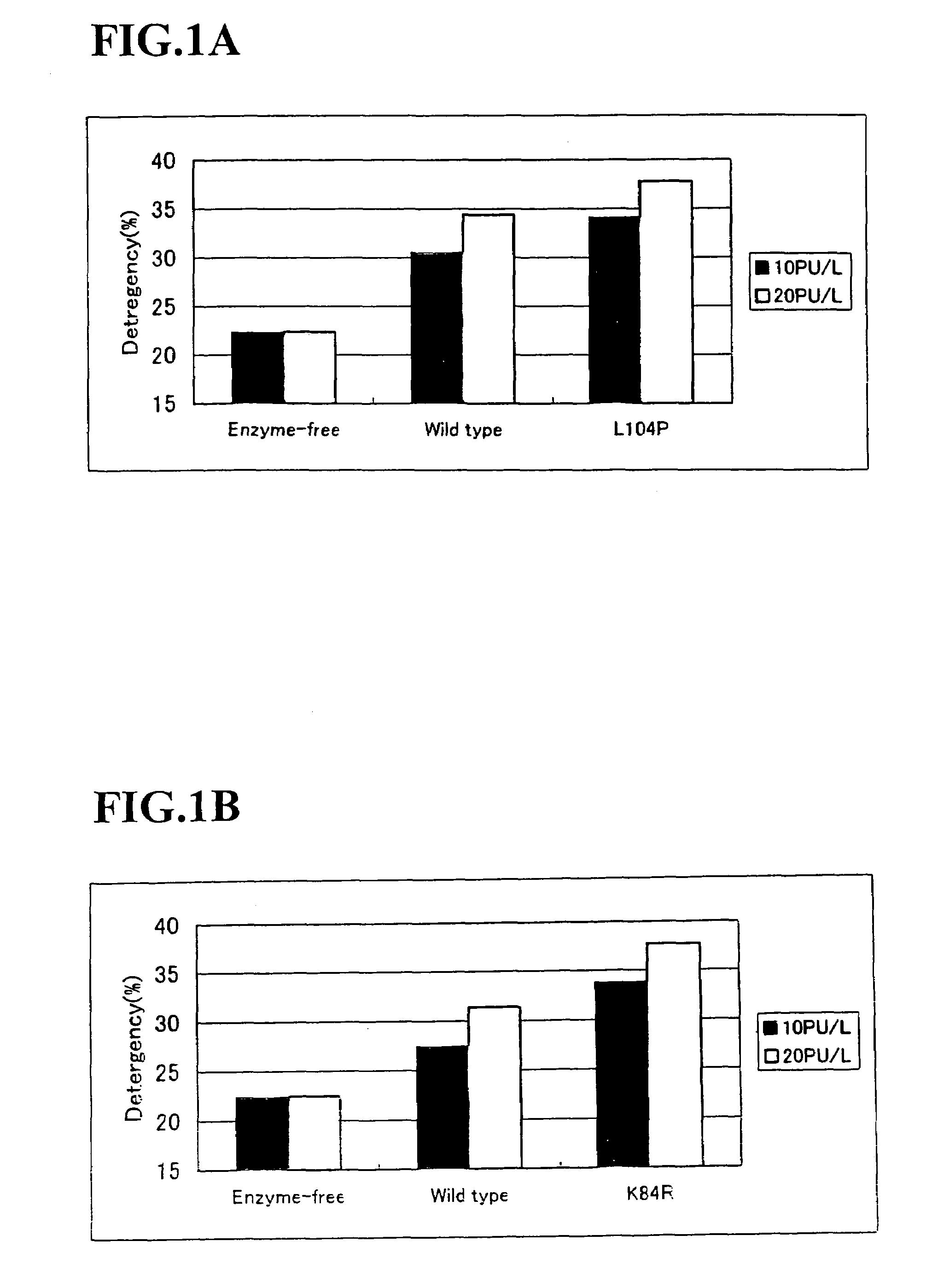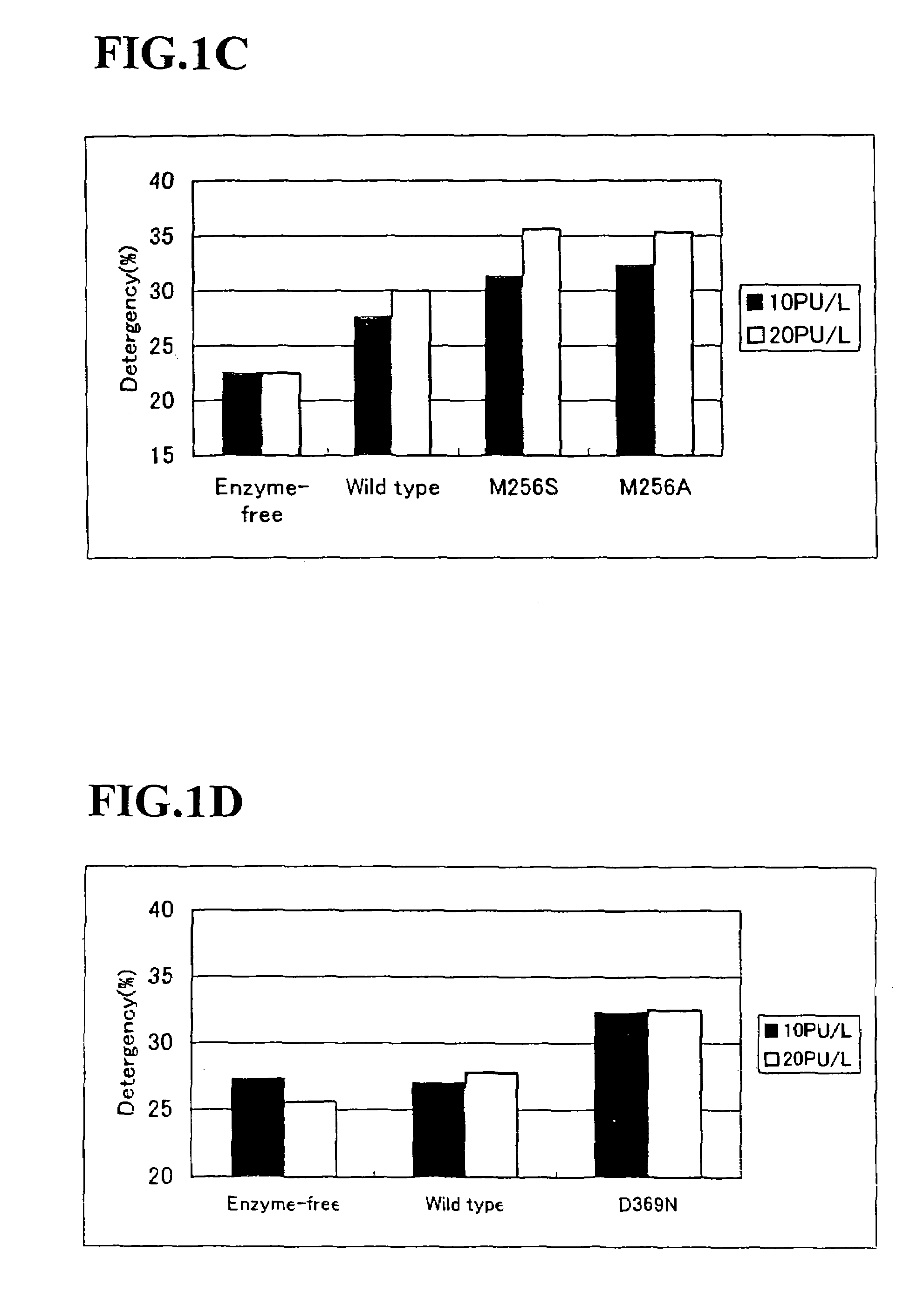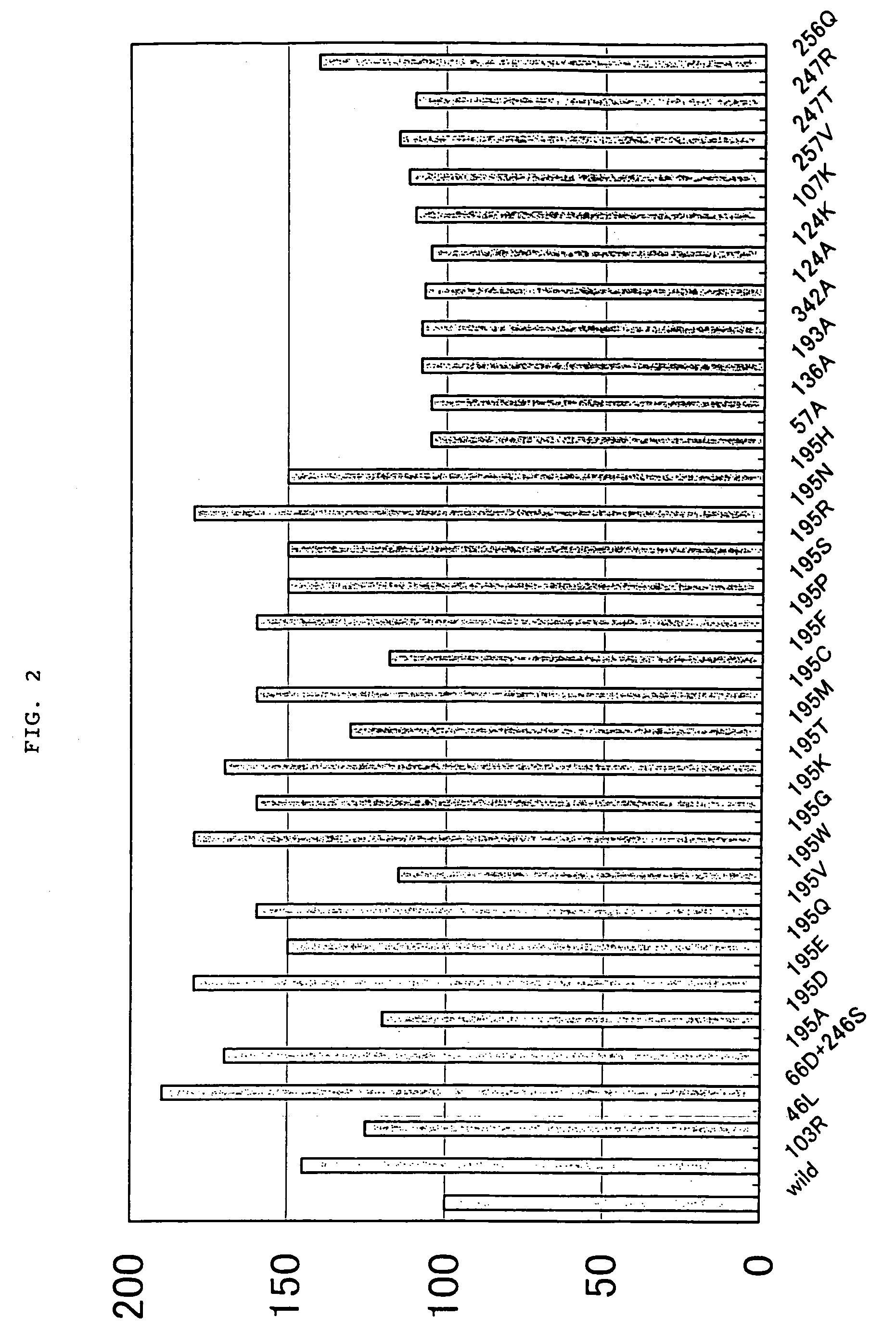Alkaline proteases
a technology of alkaline proteases and adipose, applied in the field of alkaline proteases, can solve the problems that the modified site of subtilisin did not provide useful information, and achieve the effects of improving specific activity, reducing the number of side effects, and improving specific activity
- Summary
- Abstract
- Description
- Claims
- Application Information
AI Technical Summary
Problems solved by technology
Method used
Image
Examples
example 1
[0083]Mutation was introduced at random into a protease structural gene of about 2.0 kb including a termination codon by the following manner. First, PCR was conducted using a primer capable of amplifying this 2.0 kb. A PCR master mix contained 5 ng of a template DNA, 20 pmoL of a phosphorylated primer, 20 nmoL of each dNTP, 1 μmoL of Tris / HCl (pH 8.3), 5 μmoL of KCl, 0.15 μmoL of MgCl2 and 2.5 U TaqDNA polymerase, and its total amount was adjusted to 100 μL. After modification of the template by allowing it to stand at 94° C. for 5 minutes, PCR was performed for 30 cycles, each cycle consisting of treatment at 94° C. for 1 min, at 55° C. for 1 min and at 72° C. for 1.5 min. The PCR product was purified by “PCR product purification Kit” (product of Boeringer Manheim), followed by elution in 100 μL of sterile water. With 1 μL of the eluate, second PCR was conducted under conditions similar to those of the first PCR except for the template DNA. After completion of the second PCR, the ...
example 2
Purification of an Enzyme
[0086]The protease active fraction was prepared in the following manner. The transformants obtained in Example 1 was cultured at 30° C. for 60 hours on a medium A (3% polypeptone S (product of Nippon Pharmaceutical), 0.5% yeast extract, 1% fish meat extract (product of Wako Pure Chemical Industries, Ltd.), 0.15% dipotassium phosphate, 0.02% magnesium sulfate 7 hydrate, 4% maltose and 7.5 μg / mL of tetracycline). The supernatant of the thus-obtained cultured medium was added with ammonium sulfate to give 90% saturation, whereby salting-out of protein was caused. The sample obtained by salting-out was dissolved in a 10 mM tris HCl buffer (pH 7.5) containing 2 mM of calcium chloride. The resulting solution was dialyzed overnight against the same buffer by using a dialysis membrane. The fraction in the dialysis membrane was applied to DEAE Bio-Gel A (product of Bio-Rad Laboratories) equilibrated with a 10 mM tris HCl buffer (pH 7.5) containing 2 mM calcium chlori...
example 3
Measuring Method of Protease Activity
(1) Synthetic Substrate Assay
[0087]A decomposition rate was measured using a synthetic peptide made of Glt-Ala-Ala-Pro-Leu(A-A-P-L) as a substrate. Described specifically, a 50 mM borate / KCl buffer (pH 10.5) containing each enzyme to be evaluated and 3 mM of Glt-A-A-P-L-pNA (product of Peptide Institute, Inc) was kept at 30° C. for 10 minutes and then, an absorbance at 420 nm was periodically measured. The peptide hydrolyzing activity was determined from an increasing ratio of the absorbance at 420 nm per unit hour. The protein was determined using a protein assay kit of Bio-Rad Laboratories.
(2) Natural Substrate Assay
[0088]After 1.0 mL of a 50 mM borate buffer (pH 10) containing 1% (w / v) of casein was kept at 30° C. for 5 minutes, 0.1 mL of an enzyme solution was added and reaction was conducted for 15 minutes. To the reaction mixture, 2.0 mL of a reaction-stopping solution (0.11M trichloroacetic acid—0.22M sodium acetate—0.33M acetic acid) was ...
PUM
| Property | Measurement | Unit |
|---|---|---|
| pH | aaaaa | aaaaa |
| pH | aaaaa | aaaaa |
| pH | aaaaa | aaaaa |
Abstract
Description
Claims
Application Information
 Login to View More
Login to View More - R&D
- Intellectual Property
- Life Sciences
- Materials
- Tech Scout
- Unparalleled Data Quality
- Higher Quality Content
- 60% Fewer Hallucinations
Browse by: Latest US Patents, China's latest patents, Technical Efficacy Thesaurus, Application Domain, Technology Topic, Popular Technical Reports.
© 2025 PatSnap. All rights reserved.Legal|Privacy policy|Modern Slavery Act Transparency Statement|Sitemap|About US| Contact US: help@patsnap.com



